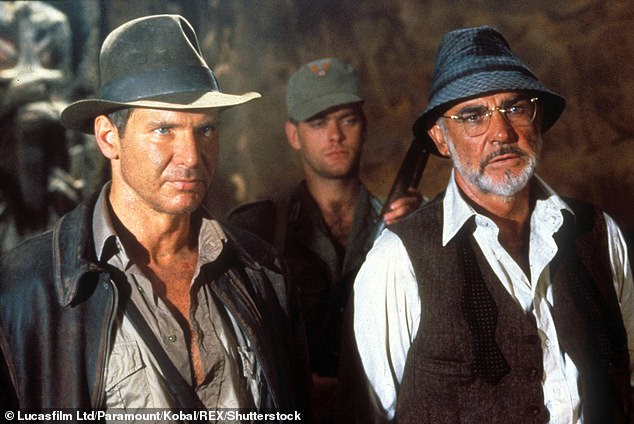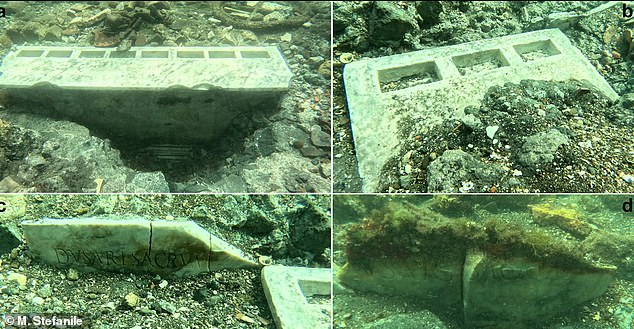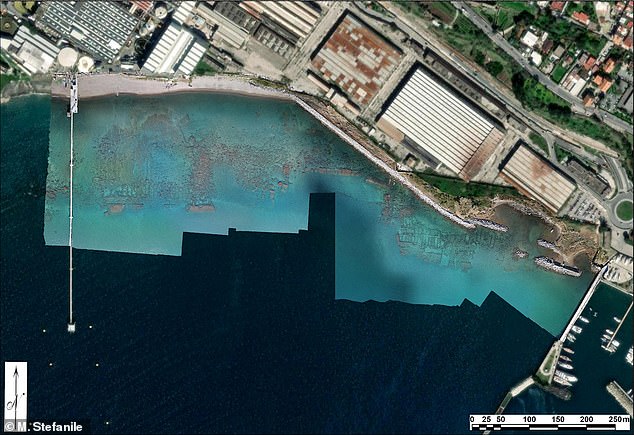Archaeologists discover 2,000-year-old ‘Indiana Jones’ temple
Archaeologists have uncovered the ruins of a 2,000-year-old temple built by an ancient Indiana Jones civilization.
The religious temple had a rectangular plan and two rooms with access to internal routes of the vicus Lartidianus, an area intended for foreign people who traded.
The discovery off the coast of Puteoli, modern-day Pozzuoli, marks the first known temple built by the Nabataeans, a nomadic Arab merchant civilization that originated in Jordan, outside the Middle East.
The civilization was also responsible for building Al Khazneh, an elaborate rock-cut tomb carved into a sandstone cliff face in Petra, Jordan, where the 1989 film Indiana Jones and the Last Crusade was filmed.
“The existence of a Nabataean sanctuary within the port area confirms that there was a community from that region that participated in the commercial activities of Puteoli,” according to studies published in the study published in the magazine Antiquity.
‘The construction of the sanctuary was possible when the Nabataeans enjoyed the freedom and opportunities offered by friendship with Rome and the independence of their motherland.’
Each room has Roman-style walls and marble slabs etched with the Latin inscription ‘Dusari sacrum’, meaning ‘devoted to Dushara’, the most important god in the ancient Nabataean religion.
The long-lost temple had two rooms with altars and inscribed marble slabs. It was built by the Nabataeans who came from Jordan and also built the famous Al Khazneh
The underwater structure is located about 50 meters off the coast of Pozzuoli, which was once a major port for Roman ships to bring trade goods from different parts of the empire.
But centuries of volcanic activity in the region covered the ancient temple with layers of magma until it was rediscovered by archaeologists exploring the Gulf of Pozzuoli in search of long-lost treasures.
The discovery was made in 2023 during an underwater archaeological documentation of Puteoli harbour, but the team has spent the past year further excavating the underwater temple.
The structure was probably built during a period of Nabataean wealth and independence and when it was one of the Romans’ trading partners.
For this reason, the team estimated that the temple was built during construction the reign of Augustus (31 BC – 14 AD) or Trajan (98 – 117 AD).
The Nabatean Kingdom was an independent political entity from the mid-3rd century BC until it was annexed by the Roman Empire in 106 AD.
The ancient Arab civilization controlled thriving trade routes that provided the transport of luxury goods from the Indian Ocean over desert caravans to the Mediterranean, but also stopped at Puteoli and strengthened relations.
Archaeologists identified Chamber A and Chamber B beneath the blue water, which they discovered were built with locally sourced materials.
Room A contained two white marble altars, one that once housed sacred stones used in Nabataean worship in eight rectangular recesses.

Indiana Jones and his father are on the hunt for the Holy Grail in the movie ‘Last Crusade’. They end up at Al Khazneh in Petra, Jordan, a huge structure built into the side of a stone wall built by the Nabataeans.

Archaeologists have uncovered large stone slabs and altars among the temple ruins. Etched onto a marble slab was the Latin inscription ‘Dusari sacrum’, meaning ‘devoted to Dushara’, the most important god in the ancient Nabataean religion
A second altar on the seabed had three rectangular recesses.
Room B also contained white marble stone slabs with the same Latin inscription.
The Nabataeans practiced a polytheistic religion influenced by the cultures of the Greeks and Egyptians.
They had many gods created in the form of sacred stones, which sat in the recesses of altars.
Puteoli was a Roman colony founded in 195 BC and later became the empire’s main port for goods shipped through the Mediterranean.
Everything from wine to perfumes, textiles and grains were brought to the port from various parts of Europe, the Levan and the Near East.

The sunken temple was found during an underwater survey. It is located about 50 meters from the coast
The Nabataean population was settled in the desert areas of the Arabian Peninsula.
About 2,000 years ago they established a settlement in Pozzuoli, building the largest commercial port in the Roman Mediterranean.
At its height around the birth of Christ, the Nabataean Empire stretched across the Middle East and included Jordan, Israel, Egypt, Syria and Saudi Arabia.
Things changed dramatically for the Nabataeans and Petra when the Romans peacefully took control of Petra (the kingdom’s capital) and the entire Nabataean people.
The enormous tomb at Petra, also known as The Treasury, was recently excavated, revealing a ‘previously unknown’ tomb containing twelve skeletal remains and grave goods.
Among the goods was a grail-shaped cup that looked remarkably similar to the one in the film starring Harrison Ford and Sean Connery.
Experts hope that analysis of the human remains can reveal more about the Nabataeans, the ancient Arab people who built Al Khazneh.
